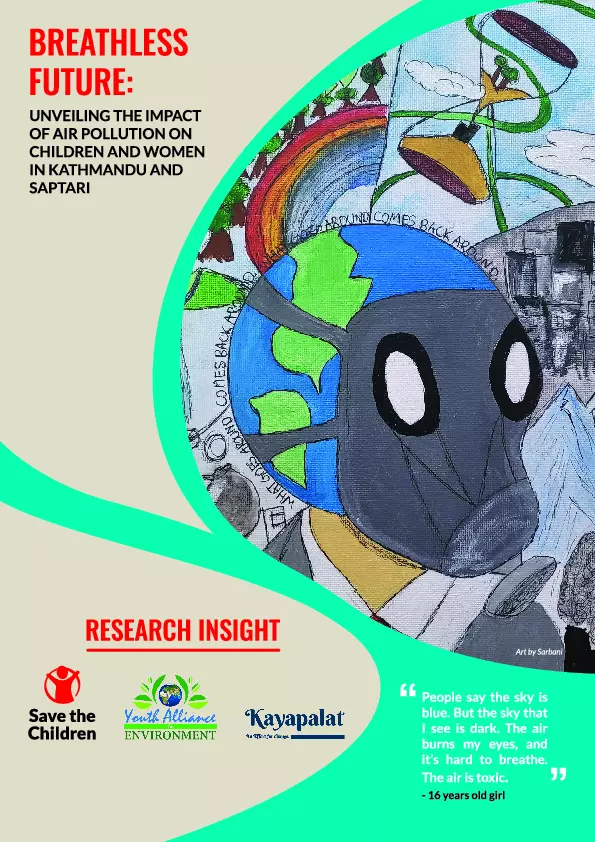
Reports
Breathless Future: Unveiling the impact of air pollution on children and women in Kathmandu and Saptari
Publication year:
2024
English
Format:
PDF (12.9 MiB)
Publisher:
Save the Children International,Save the Children Nepal
Air polluuon poses a pressing threat globally with far reaching consequences for both the environment and public well-being. It encompasses a complex array of pollutants, including particulate matter (PM) and gases such as ozone (03), nitrogen dioxide (NO2), volatile organic compounds (VOCs), carbon monoxide (CO), and sulfur dioxide (502) (Gautam, D.R., 2015). These pollutants originate from various sources, including vehicular emissions, industrial processes, household combustion, and practices leading to forest fires. Beyond immediate health risks, air pollution contributes to broader issues such as, climate change and ecological degradation.
The severity of this issue is highlighted by escalating rates of morbidity and mortality worldwide. In 2019, an alarming 99% of the global population lived in areas where air quality guidelines set by the World Health Organization (WHO) were not met, resulting in an estimated 6.7 million premature deaths annually (WHO, 2022). Long-term exposure to polluted air increases the risk of mortality from cardiovascular and respiratory diseases, while short-term exposure leads to higher hospitalization rates and restricted activity days. Vulnerable demographics, including children, pregnant women, elderly people, and individuals with pre-existing health
conditions, bear a disproportionate burden of these adverse effects.
Read full abstract
View & Download
English
1 Documents
Document information
Format
Content type
Country
Region
Rights
© Author/Publisher
Found a mistake? Help us improve!
If you have noticed a document assigned to the wrong author or any other inaccuracies, let us know! Your feedback helps us keep our data accurate and useful for everyone.
Share
Link
